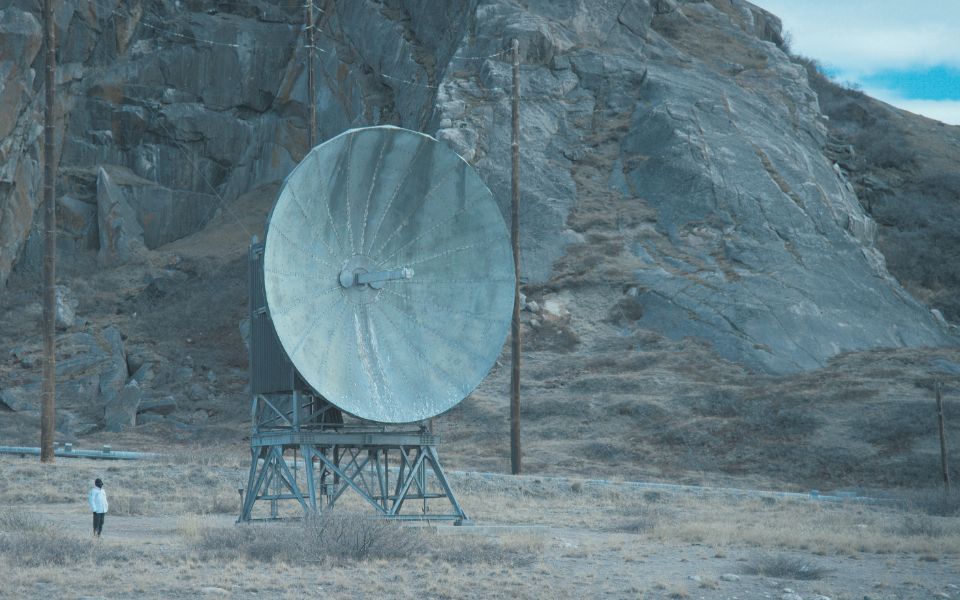John Akomfrah: Purple at the Barbican review: An astonishingly ambitious attempt to chart the anthropocene

The Barbican’s Curve gallery is essentially given over to a single, epic, six-screen video that attempts to chart the history of humanity from the turn of the last century, and show how we’ve impacted upon the world around us.
This wildly ambitious project is undertaken by documentary-maker and artist John Akomfrah, whose resulting video montage is at once mesmerising, meditative and melancholy, a wild and sometimes overwhelming voyage through our lives on both a micro and macro scale.
After walking past a pile of stacked tyres and beneath dozens of back-lit plastic containers that dangle from the ceiling, you reach the installation itself, broadcast on a loop on six enormous screens. Climate change is the overarching theme, with countless shots of belching chemical factories and farmers spraying crops, but Purple isn’t a simple polemic, and these images are interspersed with ones of natural beauty and human achievement: tropical landscapes and lithe ballet dancers.
Made up of a combination of archive material, documentary footage and staged video, it tells the story of the anthropocene – the epoch in which humanity began to alter the planet's climate and weather-systems – through the structure of a human life, from birth through to adolescence and old age.
Babies are born, children play in fields, bowler-hatted men march to work. This is all intermingled with shots of migrating flamingoes and eerie landscapes dotted with human detritus. Recurring motifs include family photographs lying at the bottom of a stream, their personal significance lost to the passage of time; people in white wind-breakers gazing into the distance; huskies pulling a sled across icy tundra.
Each video has its own soundtrack, with audio fading in and out – beeping car horns, gurgling water – with an accompanying orchestral score. Occasionally the images on each of the screens align, showing, for instance, six portraits of people from around the world.
It’s a wonderful piece of work, both uplifting and haunting, and a reminder that we all need to be better.
